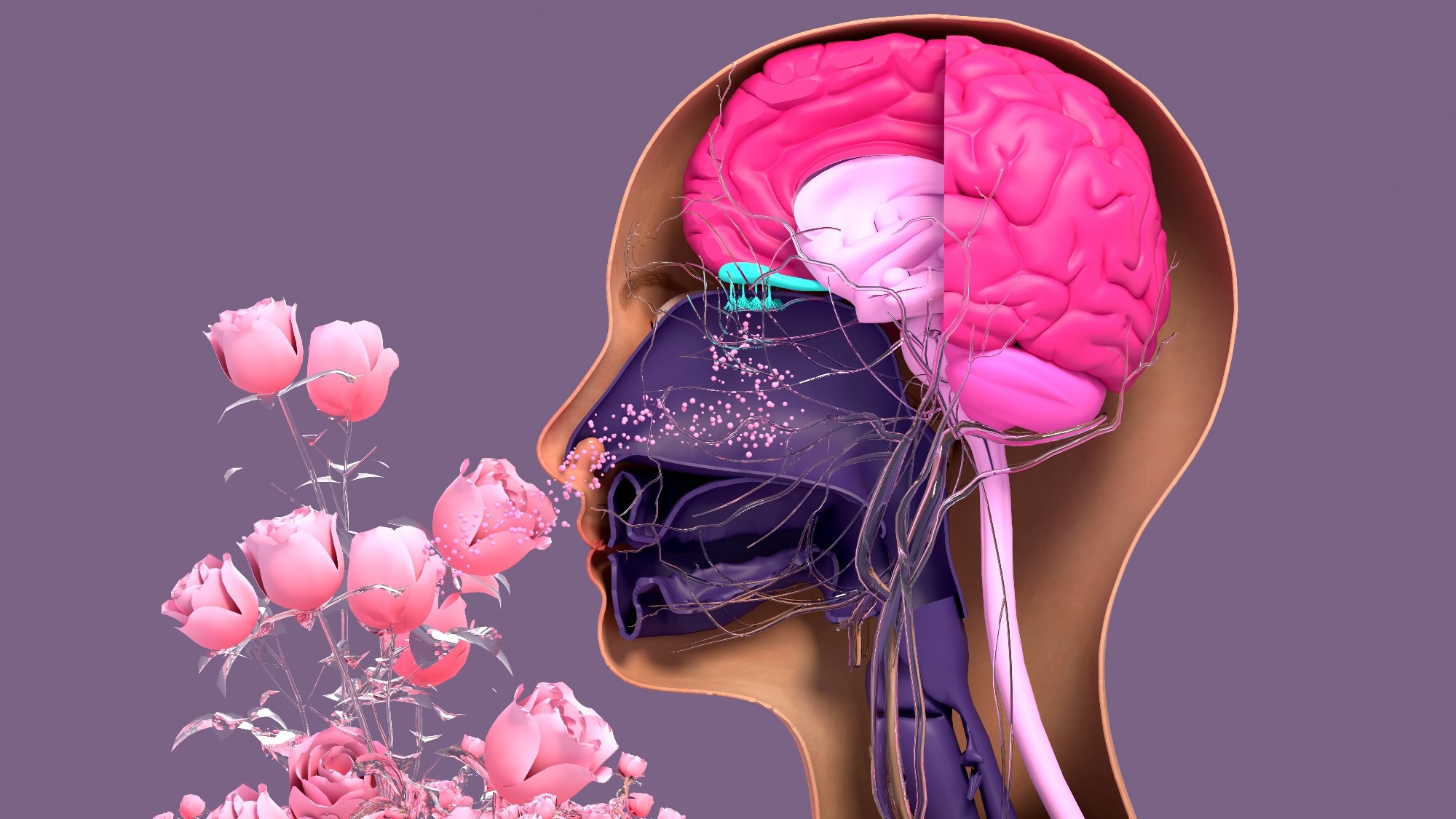Infection
Olfactory dysfunction following mild SARS-CoV-2 infection associated with neurological changes in structural connectivity
In a recent article published in Scientific Reports, researchers investigated the changes in olfactory bulb volume and structural connectivity of the brain in patients with olfactory dysfunction (OD) following mild severe acute respiratory syndrome coronavirus 2 (SARS-CoV-2) infection.
Background
Globally, coronavirus disease 2019 (COVID-19) has caused over 760 million infections and 6.9 million deaths, as well as long-term effects including neurological symptoms across survivors. Many COVID-19 patients experience OD, including hyposmia and anosmia, with some enduring persistent impairment.
Although the fundamental cause of OD in COVID-19 patients is not fully known, local olfactory system inflammation and infection of the olfactory receptor neuron have both been proposed as causative factors. According to reports, olfactory function recovers within three to four weeks in most patients; however, in some patients, the olfactory system might suffer permanent or severe damage.
OD during SARS-CoV-2 infection can be determined using magnetic resonance imaging (MRI) and olfactory nerve imaging. Studies have reported that OD in SARS-CoV-2 patients was associated with olfactory bulb reductions. However, these studies did not evaluate the association between olfactory bulb atrophy and OD severity.
While diffusion-weighted MRI tractography can analyze the underlying mechanisms of anosmia by mapping white matter (WM) pathways, alterations in the WM network can be studied using graph analysis.
Using this technique, studies demonstrated the relationship between hyposmia and neurodegeneration in aged individuals and WM disconnection. However, further studies are required on WM pathway alterations in non-neurodegenerative hyposmia.
About the study
In the present cross-sectional prospective analytical study, the researchers examined the alterations in the volume of the olfactory bulbs and brain pathways in the WM in OD patients following SARS-CoV-2 infection, compared to a control cohort.
The secondary goal of the research was to investigate if there was a link between olfactory performance, olfactory bulb volume, and structural connectivity measures.
The research was performed from October 2020 to May 2021 as part of the NeuroCOVID-19 Brazilian Registry in Brasilia, Brazil. Subjects were recruited using a non-probabilistic sampling technique from patients and medical professionals from Brasilia University Hospital before widespread COVID-19 vaccination campaigns.
The study cohort included SARS-CoV-2 patients with confirmed infection and persistent subjective hyposmia who were aged between 18 and 60 years old, while the control cohort comprised individuals without SARS-CoV-2 infection or OD, who were matched for sex, education level, and age.
The team assessed 38 subjects with OD following mild SARS-CoV-2 infection and 24 control subjects using brain MRI, Sniffin’ Sticks identification test (SS-16), and Montreal cognitive assessment (MoCA). Furthermore, graph theoretical analysis and network-based statistics (NBS) were employed to analyze the WM.
Results
A total of 67 individuals were recruited for the study, with exclusions made for low cognitive assessment scores and MRI contraindications in the COVID-19 cohort and brain structural variations in MRI and positive SARS-CoV-2 immunoglobulin G (IgG) test results in the control cohort.
Cognitive tests, clinical examinations, and MRIs were conducted on 62 participants; the COVID-19 and control groups did not differ significantly in sex, education, age, or comorbidity profiles.
While MoCA scores did not vary between the two groups, the COVID-19 group showed a 50% higher prevalence of hyposmia than the control group.
Manual olfactory bulb segmentation among 53 subjects demonstrated good interobserver agreement. Even after accounting for age, allergic rhinosinusitis and sex, olfactory bulb volume was significantly lower in the COVID-19-positive group relative to the COVID-19-negative group.
Olfactory bulb volume in COVID-19-positive subjects was lower than in the COVID-19-negative group but did not differ between COVID-19-positive participants with various SS-16 scores. SS-16 test performance and olfactory bulb volume had a positive link in the control group but not in the COVID-19-positive group.
COVID-19 patients and controls did not show significant variations in fractional anisotropy, radial diffusivity, mean diffusivity, or axial diffusivity. COVID-19 patients had increased interhemispheric linkages and structural connectivity in a particular subnetwork relative to the control cohort.
In contrast to the control group, the COVID-19 group displayed decreased global and local efficiency, increased assortativity, alterations in nodal strength, and clustering in particular brain regions.
Conclusions
The current paper shows that patients with chronic hyposmia following mild COVID-19 have WM structural pathway disruption and reduced olfactory bulb volume. The results indicate that compensatory processes in olfactory-linked and parietal sensory regions might assist SARS-CoV-2 patients with their lack of olfactory processing.
These findings help understand the neurological origin of OD in COVID-19 patients and offer insights into the changes in structural connectivity in the WM in patients with persistent OD after mild COVID-19.
More extensive investigations of brain connectivity are required to support the present findings, with longitudinal evaluations being particularly crucial for determining the long-lasting neurological effects of COVID-19. In addition, further research is necessary to examine the potential impacts of OD on everyday functioning and quality of life.

